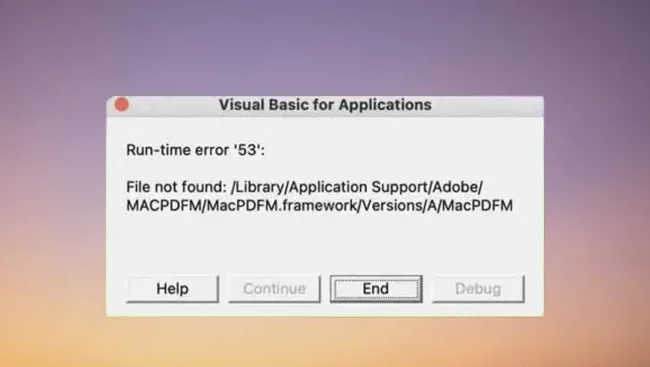Automation has become a primary source of change to accelerate the app development life cycle without compromising on quality. But with a ton of Automation frameworks available in the market, it becomes difficult to choose one over the other. And hence there is a need to understand how various iOS automation frameworks work to make the right choice that suits the needs of your testing and development teams in your organization.
In this guide, we will discuss some of the most popular iOS automated testing frameworks that testers in the app testing community use. This guide will help many users in making a well-thought-out informed decision about choosing the most suitable framework for their testing needs.
Continuous advancement in the app development field has given us access to various frameworks and various mobile automation testing. These frameworks and tools are created to make it faster and easier to develop, test, and release apps faster. Testing frameworks have become indispensable to the SDLC as they help optimize the whole testing process and guarantee that the quality standards are met.
According to the Build fire report, there are over 2.2 million applications available in the Apple Store. Looking at a vast mobile market competition, iOS developers should use excellent iOS testing frameworks to build and release high-quality applications.
1. Appium

Appium is a leading open-source framework and automation tool for hybrid, native or mobile applications on Windows desktop, iOS mobile, and Android mobile platforms. It allows developers and testers to write and execute automated mobile app tests, helping them deliver faster quality software, including minimum risk factors.
Benefits of Appium
- Free-to-use and open-source testing tool
- Creating the same JSON wire protocol as Selenium will make the transition easy for QA testers and mobile developers.
- Supports programming languages like Java, JavaScript, Python, and Objective-C
- Cross-platform support enables the reuse of test scenarios across the web and mobile channels.
- Supports your favorite unit testing frameworks XCUITest and XCTest.
- Enables native, hybrid, and web app testing on Android and iOS operating systems.
- It is backed by an active community that offers troubleshooting and consistent support to its users.
Disadvantages of Appium
- Dependent on a cascade of open-source factors that must be installed in a version to support the others.
- Customers will need to learn the theory of native apps/selectors and have little insight into Appium architecture, adding a learning factor to it.
2. Detox
Detox is an end-to-end automated testing framework that is used to test cross-platform mobile apps. The only drawback is that it supports testing on iOS apps actual device testing but instead supports Android devices.
It is commonly leveraged as a Node.js library in your test code; therefore, tests should be jot down in JavaScript.
Benefits of Detox
- Supports cross-platform tests
- Debuggable: Involves async-await to step through, similar to production code
- Runs on cloud-based and emulators real devices
- Unlike EarlGrey and Espresso, Detox tries to ensure that your application is outstanding before allowing automation -to continue
- Designed for CI: Detox is CI/CD ready and created to run inside a Continuous Integration pipeline.
- Test runner independent: Detox can run on anything that runs on JavaScript
- The underlying technology is EarlGrey and Espresso. Hence it was designed based on Google’s fine work.
Disadvantages
- Partially supports running tests on Android devices
- It doesn’t run on iOS devices (till now)
- Detox is not well-supported or is not as popular as other tools in the segment.
3. EarlGrey
Developed and designed by Google, EarlGrey is an open-source native test framework leveraged for user interface iOS app test automation. Google also leverages the framework internally for functional testing of iOS native applications such as Google, Google Photos, Calendar, Google Translate, YouTube, and more. It provides QAs the ability and access to improved synchronization quality for consistent UI testing.
The built-in synchronization is a crucial aspect that allows test scripts to wait for particular UI events to appear before starting an interaction with the UI application. It automatically synchronizes with the network and UI requests; however, it lets a customer implement manual customized timings.
Advantages
- Earlgrey is a dynamic framework with great synchronization feature across internal components
- Seamlessly integrates with Xcode
- Easy to adopt in an iOS project, directly or by leveraging CacaoPods
- Open-source framework
Disadvantages
- Seamlessly integrates with Google Analytics
- Programming languages limited to Swift and Objective-C
4. OCMock
OCMock is a powerful mock object testing library leveraged to design stubs in an iOS application. Mock things play a crucial role in software testing as they allow QA testers to simulate the behavior of actual and complex objects. There isn’t any built-in support for mock things in Xcode. Thus, OCMock is leveraged as a quirky library. Supports Objective-C plus allows customers to add mock valuables in current test cases.
Advantages
- It is open-source and hence a free tool to use.
- Leverages Objective-C language making it very user friendly for developers and testers.
- The easiest way to add mock valuables to current unit tests
Disadvantages
- OCMock is not a complete test solution; it’s a way of improving Xcode tests.
5. XCTest and XCUITest
XCUITest and XCTest are some of the most used automation frameworks by Apple shipped with Xcode for iOS app testing. XCUITest is a popular UI testing framework by Apple designed on top of XCTest.
XCUITest has other classes for better UI testing, like UI Accessibility. Customers design test cases in Objective-C or Swift. All these test scripts are packed in a test IPA (iOS packaged app) runner. The IPA runner performs the test scripts on the AUT(Application Under Test) IPA.
Advantages
- Directly operates at the object stage: thus, management becomes easily manageable if the app requires any changes.
- Most convenient for testers and developers as XCUITest runs from the Xcode IDE
- Increased reliability as insanity is removed
- Good framework architecture results in faster and better test execution on iOS devices
Disadvantages
- Programming languages are only limited to Swift and Objective-C.
- Xcode needs installation on every machine where XCUITest is run by teams, including CI/CD environments and tester machines.
- XCUITest code cannot run separately from the XCUITest framework; you should run the tests leveraging the XCUITest runner.
Get Started with iOS App Testing
Start automating iOS app testing easily and quickly with pCloudy, which offers access to a wide range of physical iOS devices to test and enhance your apps for better usability and functionality.
Concluding Thoughts
iOS automated testing frameworks work differently on various operating systems and real devices. In this article, we have mentioned some of the most popularly used iOS automation testing frameworks. Get in touch with us to learn more about iOS app testing automation and iOS app actual device testing.



